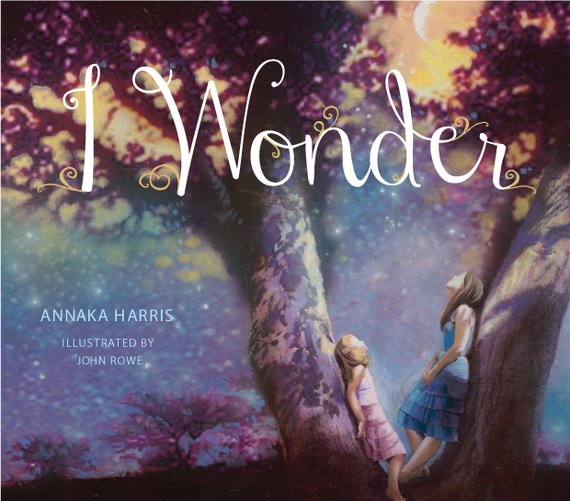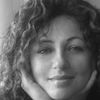Sharing early memories on BBC Radio recently, noted scientist Richard Dawkins spoke of the greatest lesson learnt at school. Most memorable for this renowned thinker was not an awe inspiring scientific discovery or a mind challenging ethical puzzler, but the realisation that 'it is OKAY to say I don't know' and that there is no shame in simply not knowing the right answer to a question.
His words brought to mind Annaka Harris's magical book I Wonder, which has this very message at its heart. While encouraging children and adults to explore the world around them and ask questions, I Wonder tells us that when we do not know the answer, 'it's OKAY to say I don't know'; this is when we have a mystery on our hands.
"It is important to teach children to say 'I don't know' with confidence, rather than embarrassment or fear", says Annaka, "children need to know that even adults don't have the answers to big questions such as the ones posed by little Eva about where Gravity comes from or how many grains of sand there are in the world".
Through a pleasantly engaging walk together, little Eva and her attentive mother explore the world, asking questions that along with the beautiful illustrations, enthral and inspire young minds. The book takes children and parents on a joyous journey of discovery, captivating their imagination with the miracle of wonder and the enchanting power of mystery.
Project Reason cofounder Annaka, takes time to tell me about the inspiration for I Wonder, John Rowe's truly magnificent illustrations and creating a book that is an experience, perfect for adults to share with little ones.
Q From ancient Greeks to Richard Dawkins's 'appetite for wonder'; man's sense of wonder and curiosity have advanced life on earth, this sense of wonder is at the heart of your book.
A Wonder is often celebrated in childhood, but children are sent mixed messages about it, as our culture generally teaches them that the feeling of not knowing should arouse shame or fear. I believe that one of the most important gifts we can give our children is the confidence to say "I don't know." The goal of I Wonder is to inspire parents and educators to help children make the connection between the feeling of not knowing and the positive experience of wonder. We can encourage children to spend more time wondering when they're willing to feel and express uncertainty.
Q The illustrations are beautiful. Some of the children I shared the book with, actually stopped to revel in them before turning the page. Did you have a vision of what illustrations you wanted or was the task left entirely in the illustrator's capable hands.
A I knew that it was important to get the illustrations right for I Wonder, so I selected the artist very carefully. I wanted to find the balance between a story that speaks to parents and one that is engaging for children, and I think John Rowe did a spectacular job of helping to accomplish this. I had very clear ideas about what I wanted the illustrations to depict, so I started by giving John specific concepts for each of the pages. John begins his work by creating "sketches" through photography, which I especially enjoyed, as I used to be a photographer myself. We had many conversations about what types of images we wanted to capture in the photo shoot, and it felt like a natural partnership from the beginning. Along the way, John contributed new ideas I hadn't considered, making the story even more powerful. At one point, for example, we were working on bringing more joy and a sense of celebration to the image with the butterflies, and one of John's sketches was based on a photograph of the mother and daughter dancing in circles together. It didn't work for that particular page, but it was so spectacular that I decided to add the image to the book as a spread with no text. The image speaks for itself and adds something very special to the story.
Q You co founded Project Reason, how did your involvement with this monumental force for good come about?
I work as an editor of nonfiction books and a consultant for science writers. My husband, the author Sam Harris, is also one of my clients, and we work very closely together on most of our projects. Project Reason came about because of the response to his first two books and our desire to continue our efforts to spread scientific thinking and secular values, in addition to supporting foundations, research, and projects devoted to the same cause.
With I Wonder Annaka Harris has created a poignant book that should be on every school. It touches on children's and adults' eternal quest for resolving mystery and stirs emotions that are forever relevant.
As I thank best selling author influential thinker Sam Harris for bringing this book to my attention, Dawkins's words resonate in my head. It is important for children to feel no shame or embarrassment at not knowing the answer to a question. They should not fear the lack of knowledge but see it as a call for quest for enlightenment. They should be encouraged to explore, investigate and find real answers, knowing that even adults don't posses all the answers and that some mysteries are yet to be resolved.
Like many classic children's books, I Wonder's message cuts right across boundaries of age and gender, carrying timeless relevance to humanity at large. Imagine what the world would be like if politicians dared to admit they do not have the answer and turned to people of true knowledge for enlightenment, if religious leaders replaced fantasy with real curiosity and exploration and if mysteries were not an open invitation for wild conspiracy theories but for marvel and discovery.

